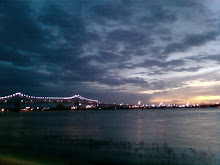Since this is supposed to be an urban prairie related blog, I guess I'd better add some pertinent content, lest they yank my license to blog (no Hillary, that wasn't a suggestion for addition to your political platform). And what better than to add Urban Prairie Schooner's well researched, comprehensive, and long anticipated definition of URBAN PRAIRIE:
***********************
Urban prairie is the term given to vacant land which appears in developed areas, primarily central cities, as the result of demolition, deterioration over time, or other destruction of the building stock. Urban prairie primarily consists of vacant or underutilized building lots, and creates often weed choked eyesores in the heart of many cities.
Most vacant open space in the inner city comes about through condemnation and demolition of abandoned and dilapidated structures, though some urban prairie is comprised of never developed property. Many structures in the inner city are several decades old, and over time deteriorate to the point where they must be replaced or removed. Unlike in economically growing areas, though, most inner city structures are never replaced due to shrinking population and demand for residential or commercial occupancy in the urban center; thus most of these removed structures are simply demolished and not replaced, leaving only a vacant parcel behind, which remains in this state indefinitely.
Sometimes urban prairie is created by environmental disaster, such as what occurred to some parts of New Orleans after Hurricane Katrina. Sometimes urban prairie results from large scale clearances for public projects, such as freeways, that were in the end never constructed or fully completed. A great example of this type of urban prairie is the cleared corridor for the canceled Park Freeway West in
Urban prairie manifests itself as unexpected green space, usually of an unkempt and unattractive nature, in what would normally be a fully developed urban area. This should be contrasted with urban parkland, which is land formally dedicated as open green space by government for public recreation purposes and is generally continuously maintained. Property which has become urban prairie will generally contain unmaintained vegetation, broken foundations, debris, trash dumped by area residents, and other junk left by hobos and other derelicts. Sometimes environmental pollution has also affected the land, rendering it as a ‘brownfield.’ Urban prairie can manifest itself in sizes as small as a smattering of empty lots within an otherwise densely developed neighborhood; however, a few scattered, well maintained undeveloped properties in an otherwise stable neighborhood would not generally be viewed as urban prairie. More commonly, urban prairie occupies large tracts of land within neighborhoods, outnumbering occupied and developed space in acreage. This is the type of development pattern commonly understood to be urban prairie, and is recognized as symptomatic of a deteriorating urban neighborhood.
Sometimes the land is left in an urban prairie state for so long that vegetation reclaims the property and returns it to nearly its natural state. This is especially common in cities with large swaths of urban prairie in their core areas. The inner areas begin to resemble forested rural areas far more than a cityscape. Greatly deteriorated cities such as
The inner city urban prairie is symptomatic not only of economic deterioration and the movement of population to outlying areas, but symbolic of the collapse of civilization in inner city ghettos, an environmental manifestation of the moral atrophy which follows in the wake of the rise of the thug and the superfly. Wild animals (besides thugs) are finding a more suitable habitat in the inner city than in the exurban areas being consumed by new development, and porcupines and opossums can be seen skulking the streets of many a downtown area in the most far-gone ghetto metropolises.
Urban prairie is most prevalent in the innermost ring of poorer residential neighborhoods closest to the downtown of a central city. These are usually the most economically depressed neighborhoods in their regions, and are the oldest residential areas containing the oldest and most deteriorated housing stock, unrestored by new investment or residential in-migration. Demolition of the remaining housing stock is continuously occurring in these areas even to the present day, thus the urban prairie continues to grow.
Abandoned but still standing structures, while not technically part of the 'true' urban prairie, certainly leave the same impact on the urban environment, and can easily be claimed by the urban prairie over time if surrounded by vacant land and rapidly growing vegetation. In a sense, abandoned housing, businesses, and even large structures such as factories, skyscrapers, and public facilities can be considered ‘virtual’ urban prairie as their lack of use render them superfluous consumers of urban space, much like vacant land. Eventually structural failure or demolition fells them, and true urban prairie inevitably consumes their space.


